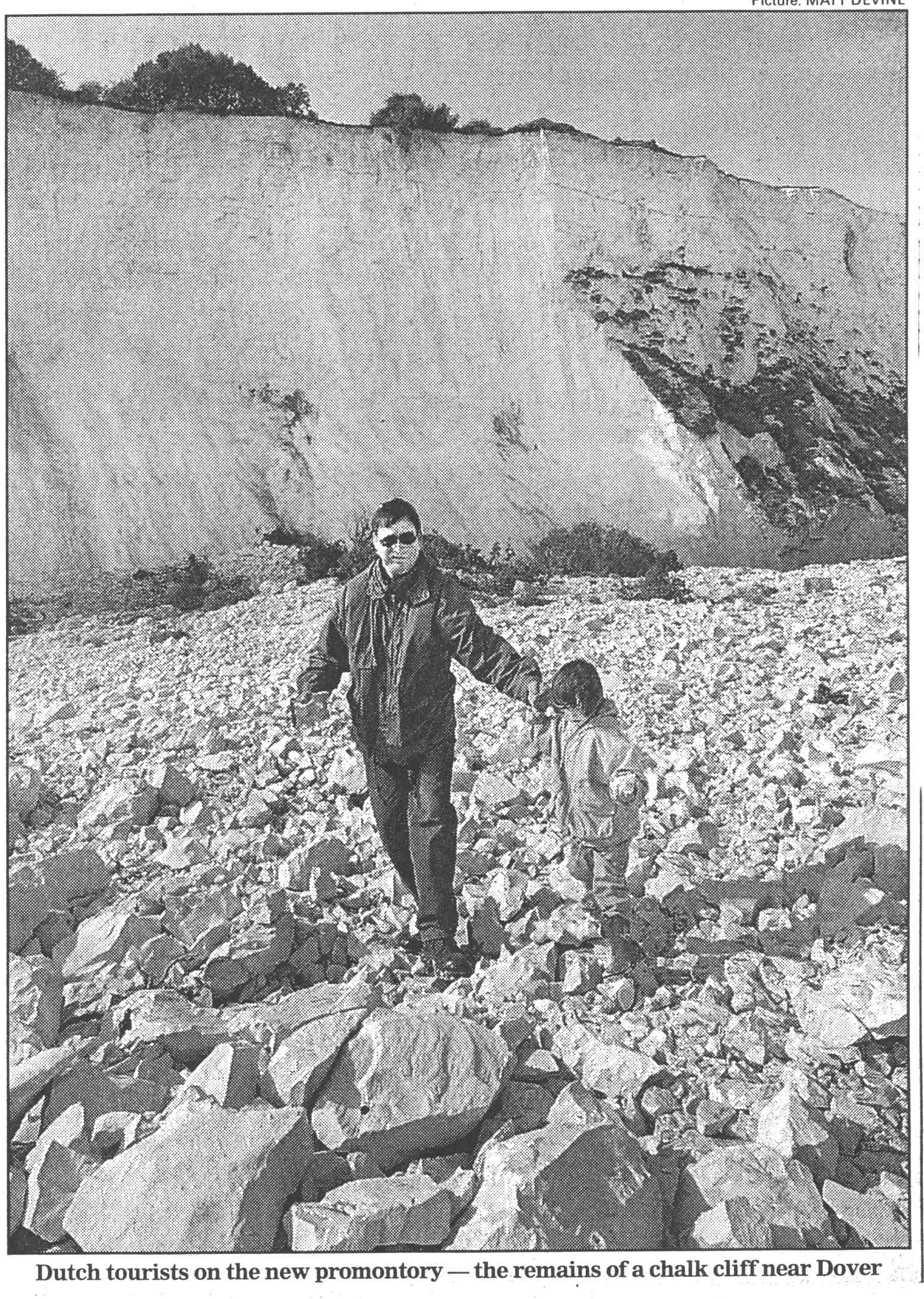

Chalk fall makes new Channel attraction
The Telegraph 06-05-2000
 A CHALK peninsula created by the biggest rock fall for 10 years off the white cliffs of Dover is attracting tourists from all parts of Europe.
A CHALK peninsula created by the biggest rock fall for 10 years off the white cliffs of Dover is attracting tourists from all parts of Europe.Thousands of tons of the chalk face collapsed a week ago at St Margaret's Bay, Kent, creating the "island" '70 yards wide and five high stretching 200 yards out to sea. Trees and vegetation are still growing from the new. island 100 yards below the cliff top. "It was not so much a rock fall as a slump," said Steve Judd, for the National Trust, which owns five and a half miles of coastline with the famous white cliffs. "The rock cascaded out into the Channel." "This type of fall is rare -probably once every 10 years - but the cliffs are constantly being eroded. That's what keeps them white. "Britain officially gets one centimetre further from France every year due to this slow erosion but it has taken 26,000 years to form the 19-mile English Channel," added Mr Judd. The new formation is best seen at low tide but is still clearly visible at other times and hundreds more visitors are expected to come and take a look at the newest Channel attraction during the next few weeks. |
The White Cliffs get whiter
National Trust Magazine, Number 93, page 11, 2001
 The famous white cliffs of Dover are suddenly gleaming, after 190,000 tonnes of chalk dropped off following the heaviest winter rainfall recorded. 'We've had about 13 falls over the last few months, because the cliffs are unusually waterlogged,' explains Steve Judd, the countryside manager for the National Trust's 4.5 miles of the white cliffs. 'Some falls have been huge, covering an area 15 metres deep and 85 metres wide, on cliffs that are 100 metres tall. That's an awful lot of chalk.' The famous white cliffs of Dover are suddenly gleaming, after 190,000 tonnes of chalk dropped off following the heaviest winter rainfall recorded. 'We've had about 13 falls over the last few months, because the cliffs are unusually waterlogged,' explains Steve Judd, the countryside manager for the National Trust's 4.5 miles of the white cliffs. 'Some falls have been huge, covering an area 15 metres deep and 85 metres wide, on cliffs that are 100 metres tall. That's an awful lot of chalk.'The National Trust is working with local authorities to ensure visitors are warned of the risks. 'The worst scenario is that you are standing on the turf when it falls,' says Judd. He knows people who have walked back along the cliffs to find part of their outgoing route has disappeared. 'Over time, the cliffs recede at roughly the same speed as your fingernails grow. But they do it in sudden jumps - the whole lot drops in a couple of seconds, so caution is essential.' The erosion is entirely natural: each fall leaves behind a cliff face free of mosses and lichens, which otherwise discolour the cliffs. Falls were occurring weekly this spring. 'Physically, we are moving farther away from Europe - whatever the politicians sayd' grins Judd. |